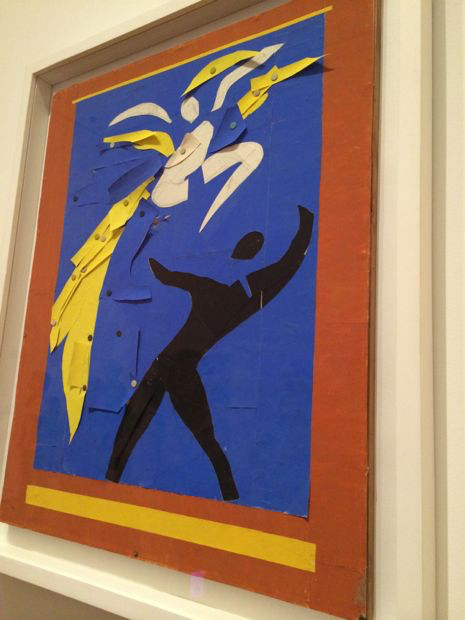Three Surprises from MoMa's Henri Matisse: The Cut-Outs
Looking for an outing to escape winter's blast? The last thing you might think to tackle is a visit to the Museum of Modern Art to see the blockbuster show of Matisses' Cut-Outs. The crowds, right?
But passing up the show would be a big, big mistake. Hurry. It closes on February 10.
Here are three reasons why it is a must see and the perfect activity to usher in your new year. And if you are outside the NYC Metro area, here is what surprised me most about the show and why I think it is so special.
1. The real deal is vastly different from any reproduction you have ever seen.
You may think you know the Cut-Outs, but you don't. Any reproduction is a mere, sanitized facsimile of the actual art. When you look at a repro, everything is all cleaned up. It is only in person where you can see the hand of the artist. There are slivers of scissor cut marks, and you can see the holes in the paper left behind from the pins Matisse's assistants used to place the cut-outs. Check out these pictures. The first shows an actual pin and the two that follow display precisely how the artwork is pieced together.
2.. The scale of some of the works are unexpectedly massive.
Take the seminal piece Large Decoration with Masks composed by Matisse in 1952-53. A museum poster of this work just happens to be the very first thing I ever had professionally framed. It travelled with me from law school dorm, to my first ever apartment and finally to my first home that I owned with my husband. Eventually (sadly) the glass broke and the poster was ruined. I love this piece, but nothing could have prepared me for seeing the actual work. It takes up the whole of a GIANT room. Look. So moving.
3. Finally, however, the most compelling surprise from this show is the inspiration it gives to presevere down your chosen path in 2015 no matter what obstacles are thrown in your way.
Matisse, having undergone a colonstomy in 1941, was in very poor health, and spent much of the time in bed or in a wheelchair. Instead of becoming depressed, or giving up his creative life, he created an entire new art form that he called his "little garden."
"You see", Matisse said in a 1952 interview with the writer Andre Verdet, "as I am obliged to remain often in bed because of the state of my health, I have made a little garden all around me where I can walk...There are leaves, fruits, a bird..."
As Matisse spoke he gestured to the walls around him where he had created a large cut paper mural that covered half the room.
If Matisse retained such a positive and productive attitude, so should we all. The perfect New Year's resolution.
Photo of Large Decoration of Masks from Whale Lifestyle. Photo of Matisse in a wheelchair from Atelierlog. All other photos by Lynn Byrne.
*********************
My dear readers,
I am one of 5 finalists for Best Writing on a Design Blog for the Design Bloggers Hall of Fame. I am very honored. This award is chosen half by a jury and half by a popular vote. I work diligently on my blog and I would be thrilled to receive this recognition for my hard work.
Here is the voting link: http://design-bloggers-conference.com/hall-of-fame-awards/
Please vote for me. You should be able to vote once per device. Voting is open until February 6. And do leave a comment if the link fails, so I can try to correct it.
Big hugs and thanks, Lynn






